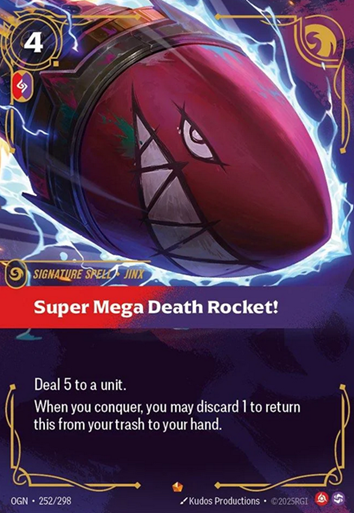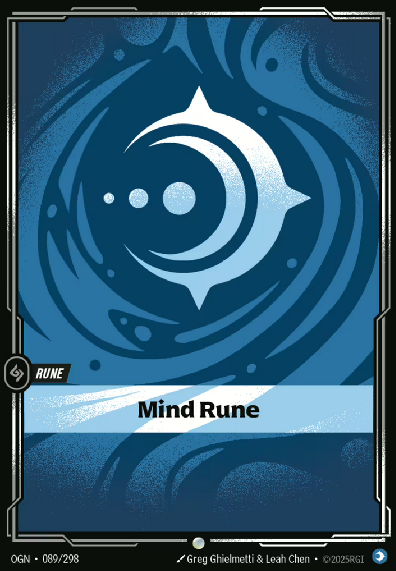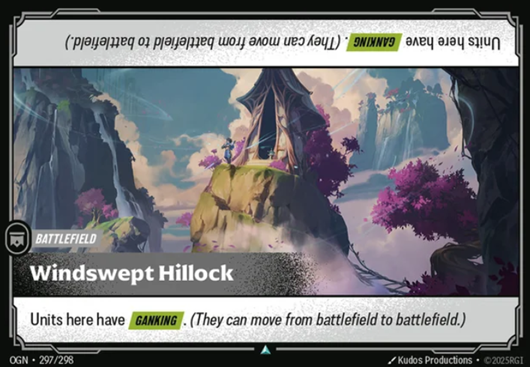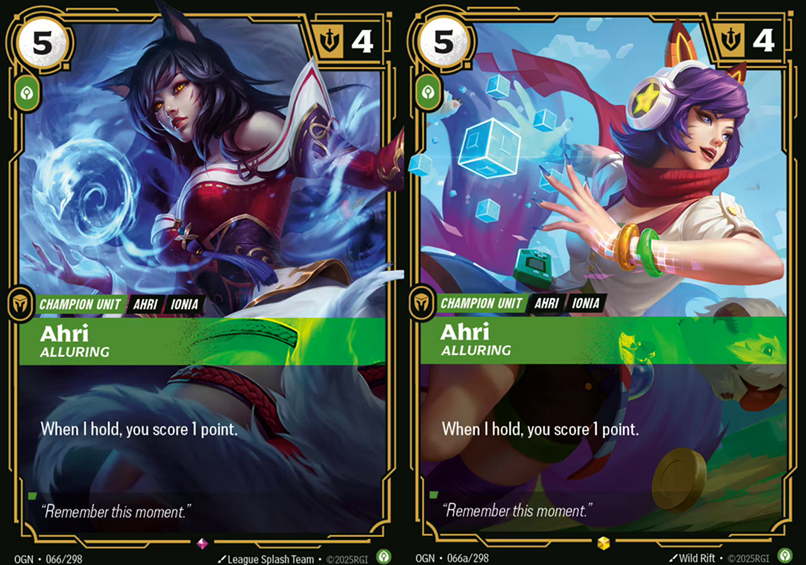Let’s talk Riftbound
- Aaron Smith

- Jul 4
- 5 min read
Updated: Jul 18

Riftbound is Riot Games’ new trading card game bringing iconic characters from their popular video game, League of Legends, onto the tabletop. We’ve seen other successful ventures outside of Summoner’s Rift in Arcane on Netflix, but us avid TCG fans know it takes a lot to make a good card game.
Thankfully Riot has decided to draw a lot of inspiration from popular TCG’s like One Piece Card Game, Star Wars Unlimited, and of course Magic: The Gathering. I’m here to be your guide to Riftbound and give you a general overview of the game. We’ll be diving into how the game plays, taking a look at collectability, and I’ll wrap everything up with my thoughts on the game.
Decked Out
Riftbound will launch with at least 3 confirmed starter decks in Jinx, Viktor, and Lee Sin. These starters will not contain exclusive cards and will be included in the first set– Origins. The deck will consist of 40 cards and be based around a Champion Legend. This Champion Legend will not count towards your 40 cards and will dictate what types of cards you are allowed to use in your deck. In addition to a Champion Legend you will have a Champion Unit which must share a name with your Legend.

You may have 3 copies of your Champion Unit in your deck, and the same rule applies to any card you want to use. One of your chosen Champion Unit will start the game face up in the Champion Zone.
Next up is Signature Spells. These spells are unique to your chosen Legend and can only be used with that Legend. For example, you cannot have a Signature Spell for Jinx in your Yasuo deck. Only 3 total Signature Spells can be in your deck at a time.

In order to play these units and spells you use Runes. Each 40 card deck has a Rune deck consisting of 12 cards. Each turn you gain 2 runes that can be tapped to play cards from your hand or Champion Zone.

These resources can also be recycled if the card you are playing requires it, meaning they will go back into the resource deck when casting certain spells or units. Tapped resources can be recycled allowing you to strategize different ways to play your cards. Runes will also be divided into different types, and your Champion Legend dictates what runes your Rune deck will consist of.
Your Objective
You and your opponent will choose a Battlefield to start the game. You’ll be competing to earn 8 points throughout the game by taking and controlling these Battlefields. Each Battlefield brings its own unique mechanic providing a benefit to the controlling player.

The first turn you move a unit into a battlefield nets you 1 point and if you control that battlefield at the start of your next turn, you gain an additional point. To win, you need to secure 8 points but cannot get your last point when taking control of a battlefield. You must control it until the start of your next turn. You can use units and cast spells to remove opposing units from these battlefields to vie for control and earn points.
Units begin the game in your base area and are played tapped. This is to signify that the unit cannot act, similar to summoning sickness in other popular TCG’s. The second turn a unit is on the field it can assault a battlefield currently occupied with opposing units, or it can take control of it.
Each turn will have phases allowing you to perform different actions. The turn begins with the Awaken phase where everything exhausted becomes readied. This is where units played last turn or units that assaulted a battlefield previously will be set to active. Next up is the Beginning phase. This phase begins the start of turn based abilities, as well as scoring points for controlled battlefields. The Channel phase follows after, allowing you to play 2 Runes from your Rune deck and immediately after is the Draw phase. Once you’ve drawn your card, the Action phase begins. The Action phase allows for spells to be cast, abilities to be activated, and units to be exhausted and moved to contest battlefields. Once you’ve done all you choose to do, you’ve moved into your End phase and may pass the turn to your opponent.
The idea of attacking your opponent directly is absent from Riftbound and this form of a turn lends itself to its predecessor League of Legends. The focus is put on battlefields, much like lanes, where units will duke it out for control and supremacy each turn. Adding in spells and other forms of interactions gives the game a feel similar to that of using abilities or items on Summoner’s Rift. Overall the foundation of a solid TCG is there, but what about collectability?
The Shiny Stuff
No TCG is complete without rare and elusive cards and Riftbound is no exception. Origins, Riftbound’s first set, will include common, uncommon, rare, epic, and alternate art cards called Overnumbered.

Each art will have a symbol detailing just how rare they are in the bottom middle of the card. Both Champion alternate arts and Runes have been announced for Origins adding a bit of flavor and personalization to the game.

Want to use the art for the skin you play most in League of Legends? Riftbound has you covered. Most revealed alternate arts for Champions are based around already existing concepts in League of Legends. This helps add a familiarity to your cards, or provides you with elusive chase cards to really make your deck stand out!
My Thoughts
While doing my research for this game I found myself enjoying the overall flow of how the game played. The phases throughout your turn provide a familiar feel to that of Magic: The Gathering allowing for both you and your opponent to act and react. The focus on battlefields and not attacking your opponent directly feels very similar to being in a lane. Overall, Riot Games has captured the feel of League of Legends in Riftbound and there are a lot of exciting aspects to the game.
Alternate art cards and Runes are a solid choice in terms of collectability. Being able to feel the thickness of the cardboard and texture of foil cards would help to gauge the quality, but for now I’ll hope for One Piece Card Game thickness, something akin to Hyperspace cards in Star Wars Unlimited, and beautiful foiling from Magic: The Gathering.
If this little exposé has piqued your interest at all, I highly encourage you to dig into some additional content on Riftbound on your own and join me in October at The Gamer’s XP! See you on the Rift, Summoner!







Im definitely checking this out!